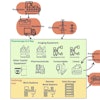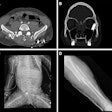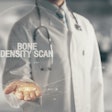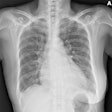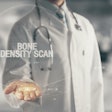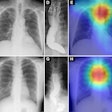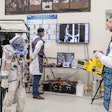Many facilities that perform coronary CT angiography (CTA) are failing to protect their patients from high radiation doses -- even centers that scan large numbers of patients -- according to new data from sites throughout the U.S. and Europe, published in the February 4 Journal of the American Medical Association.
The study involved nearly 2,000 subjects undergoing coronary CTA, who received a median radiation dose equivalent to 600 chest x-rays. Some sites reported radiation dose levels six times higher than at other facilities. And although effective techniques exist to reduce patient doses substantially, many clinicians have not yet succeeded in implementing them, leading to wide variations in radiation dose, the authors reported in JAMA.
The study comes on the heels of a new report from the American Heart Association's (AHA) Council on Clinical Cardiology and Council on Cardiovascular Radiology and Intervention. That report, released on Monday, warns that in the absence of reliable information about the risks of coronary CTA, providers should limit all heart studies involving radiation to patients with symptoms such as chest pain who are not at low risk for heart disease.
Meanwhile, critics of the JAMA study said it was unfair to conclude that providers failed to use the range of available dose reduction techniques -- considering that the last patients in the study were scanned before at least one major dose reduction method first appeared in the medical literature.
Wide variation in cardiac CT doses
Established dose reduction methods are still not being implemented for most exams, leading to excessive radiation dose, principal investigator Dr. Jörg Hausleiter and colleagues wrote in JAMA.
In addition to minimizing the dose for every exam, providers must weigh the clinical utility of coronary CTA for the assessment of coronary artery disease against the radiation dose and the small but potential risk of cancer, they added.
"Many clinicians may still be unfamiliar with the magnitude of radiation exposure that is received during coronary CTA in daily practice and with the factors that contribute independently to radiation dose," wrote Hausleiter and colleagues, from Deutsches Herzzentrum München and Klinik an der Technischen Universität München in Munich, Germany. "This information is of vital importance for the development of strategies that will allow a reduction of patient exposure to ionizing radiation" (JAMA, February 4, 2009, Vol. 301:5, pp. 500-507).
Now that coronary CTA has been established as an effective way to evaluate patients for coronary artery disease, and with 64-detector-row scanners being installed at growing numbers of facilities worldwide, the number of scans being performed can only be expected to increase, they added.
The Munich team, joined by researchers from the University of Erlangen, Germany, and the Mayo Clinics in Rochester, MN, and Jacksonville, FL, examined the radiation dose delivered by coronary CTA in daily practice, assessing contributing factors as well as dose reduction strategies.
The study, dubbed the Prospective Multicenter Study on Radiation Dose Estimates of Cardiac CT Angiography in Daily Practice I (PROTECTION I) examined 1,965 patients who underwent coronary CTA between February and December 2007. Researchers from 21 university hospitals and 29 community hospitals analyzed the results to identify independent predictors of radiation dose, measured as dose-length product (DLP).
The effective dose was derived from the product of the DLP and an organ weighting factor for the chest [k = 0.014 mSv x (mGy x cm)-1] as the investigated anatomic region, the authors explained.
Linear regression analysis was used to identify independent predictors associated with DLP. Participating physicians were asked to enroll all patients undergoing ECG-gated coronary CTA during an entire month during the 11-month study period ending in December 2007. The sites had a median 25 months of experience in the acquisition and interpretation of coronary CTA.
The subjects' median heart rate was a relatively slow 61 bpm (range, 55-75), with 1,874 (95%) of patients in stable sinus rhythm, and 82% undergoing coronary CTA to examine the coronary arteries. A small number of patients were scanned on 16-detector-row scanners (4%), with the majority (62%) undergoing 64-detector-row or dual-source 64-detector-row coronary CTA, the authors reported.
Readers with more than four years of experience in the interpretation of coronary CTA sampled one-third of the exams in the study, rating image quality in each segment as either diagnostic or nondiagnostic.
A total of 1,197 of 1,546 patients (77%) undergoing 64-slice coronary CTA for the visualization of the coronary arteries had a BMI of 20 to 30, the authors wrote. In a typical-sized patient population, the median CTDIvol and DLP were 50.4 mGy (IQR, 36.1-69.6 mGy) and 827 mGy_cm (IQR, 546-1,152 mGy_cm), respectively.
Wide variation in dose
The median DLP was 885 (568-1,259) and the median effective dose was 12 (8-18) mSv. Yet there was substantial variability in DLP between study sites (range of median DLPs per site, 331-2,146 mGy × cm). The median (midpoint) DLP of the patients in the study was 885 mGy × cm, corresponding to 12 mSv -- the equivalent of approximately 600 chest x-rays, Hausleiter and colleagues wrote.
How often were dose-trimming methods applied? The reduced 100-kV tube voltage was used in just 5% of patients, with sequential scanning in 6%. Electrographically controlled tube current modulation was the most commonly used method in 73% of patients.
Factors affecting dose
Among all of the variables associated with radiation dose, the two patient-dependent variables of body weight and absence of a cardiac sinus rhythm had a small to moderate effect on the DLP, the authors wrote.
On the other hand, scanner protocols had a major impact. The four factors that had the biggest impact on dose were scan length, electrocardiographically controlled tube current, a 100-kV tube voltage, and the use of sequential scan mode.
For example, an increase in the scan length of 1 cm was associated with an increase of the DLP of approximately 5%. Shortening the scan length could help reduce dose, the authors said.
"Instead of rigidly scanning from the carina to diaphragm, the CT technician might consider to individually adjust the scan range according to the given anatomy, to a prior performed low-dose scan for calcium scoring, or both," they wrote. "If no calcium scoring scan is performed, it may be reasonable to set the upper scan limit in the midpulmonary artery. If possible, long scan ranges including both the heart and the thoracic aorta should be avoided unless specifically indicated."
The use of automated exposure control was not significantly associated with dose; however, a 25% reduction in DLP was achieved with the use of ECG-controlled tube current modulation, a decrease lower than the previously reported 37% to 48%. This may be attributable to different implementation of the tube current modulation algorithm with different scanners.
"Some algorithms for tube current modulation are programmable by the CT technician, which may introduce an additional variation in efficacy of the dose-saving algorithm," Hausleiter and colleagues noted. They added that the use of ECG tube current modulation varied widely, between 41% and 98% depending on the scanner model used.
Another way to reduce dose is by changing the standard from 120 kV to 100 kV, which results in a 46% drop in dose. The researchers cautioned that just 5% of the study population was scanned at the lower setting, and that potential selection bias and a nonrandomized design of the dose survey limited the analysis.
"However, until such randomized data become available, the results of our study suggest that a 100-kV tube voltage might be considered as a promising method for coronary CTA dose reduction in selected [particularly nonoverweight] patients," they stated.
The researchers also found a significant effect on DLP in the different scanner models, with median DLP for the highest-dose scanner more than twice that of the lowest-dose scanner. However, the study design did not permit these findings to be proved.
"Using the [Siemens Healthcare, Malvern, PA] single-source 64-slice system with the lowest DLP as a reference, an independent association with a higher DLP was observed for the other four 64-slice CT systems," they wrote. "This finding is sure to generate controversy; however, it should be interpreted with caution. Although there may be a significant difference between scanner models in the amount of radiation to which patients need to be exposed to obtain a given level of noise and image quality, due to its observational study design and limited binary assessment of image quality PROTECTION I cannot prove this and should thus be regarded as hypothesis-generating."
Prospective gating works
The use of sequential scanning, also known as prospective gating, was limited to 6% of the study population because most scanners had not been upgraded to perform the technique at the time of the study. But for the studies in which it was applied, the method reduced DLP by a whopping 78% compared to spiral scanning protocols.
What's more, no differences were seen in image quality with use of sequential scanning, and had the scanners been upgraded to accommodate this technique, an additional 51% of the study population with stable sinus rhythm and heart rates under 63 bpm could have benefited from it, the team wrote.
In addition, the use of beta-blockers not only reduced motion artifacts and contour blurring in the images, it stabilized sinus rhythm, enabling consistent application of an ECG-dependent dose reduction.
Considering the wide range of radiation doses to which patients were exposed, and the fact that dose reduction techniques did not significantly degrade image quality, "an improved education of physicians and technicians performing [coronary] CTA on these dose-saving strategies might be considered to keep the radiation dose 'as low as reasonably achievable' in every patient," the authors concluded.
Comments on the study
In an editorial accompanying the JAMA study, Dr. Andrew Einstein, Ph.D., from Columbia University College of Physicians and Surgeons in New York City, wrote that the typical radiation dose found in the current study represented a reduction from earlier reports. At the same time, he characterized the high variability in radiation dose between facilities as "striking" (JAMA, February 4, 2009, Vol. 301:5, pp. 545-547).
"Median DLP at the highest-dose site was more than six times that at the lowest dose site, and doses ran the gamut in between these extremes," Einstein wrote. "Thus, cardiac CTA may be associated with significantly higher or lower effective dose than standard nuclear stress testing protocols, depending on how CTA is practiced at a site. Median DLP at the Latin American and South American sites was three times that at U.S. and Canadian sites."
The variability shows not only that coronary CTA is still a potentially high-dose exam, but that variability in radiation exposure is wider than previously reported, Einstein wrote.
To reduce dose, the two most important factors appeared to be the differential utilization of dose reduction strategies and differences in dosimetry between scanners.
Despite the greater dose reductions with sequential (-78%) and 100-kV scanning (-46%), the strength of evidence supporting use of these methods is currently not as great as for electrocardiographically controlled tube current modulation (-25%), which has consistently been found effective in multiple published studies, Einstein added.
The study findings suggest that dose reduction methods can be used in most patients, "which should serve as a wake-up call to cardiac CT laboratories that do not routinely use these methods," he wrote. "Given the strength of evidence supporting it, [electrocardiographically gated tube current modulation] should be widely applied."
The rapidly accumulating body of evidence in favor of sequential scanning should also be given serious consideration, particularly for patients who are not overweight, he added.
"Low-voltage scanning should also be considered, perhaps especially for patients who are nonobese and at higher risk of radiation-associated cancer, such as children and young women, although advocating its routine usage awaits further data," Einstein wrote.
Toward that end, radiation dose data should be collected and reported for every exam, he concluded. "This would facilitate quality assurance efforts and tracking of patients' cumulative radiation exposures, as well as serve as an additional motivation to technologists and physicians to control radiation dose," Einstein wrote.
Radiologists weigh in
Although radiologists have been in the forefront of those cautioning about overuse of CT, some found fault with the JAMA study's methodology.
Among the shortcomings, the study population was recruited and scanned between February and December of 2007, while the first articles describing the clinical use of prospective ECG-triggering and low-kilovoltage scanning were published in 2008, wrote Dr. Joseph Schoepf from Medical University of South Carolina, in an e-mail to AuntMinnie.com.
"It is unreasonable to expect users (particularly those at nonacademic centers, such as in the current study) to employ techniques that have not been publicized, and, as in the case of prospective ECG triggering, for the largest part were not even technically available," he wrote. "Thus, the thrust of the accompanying press release and editorial lamenting the limited use of these techniques are very much beside the point."
Nevertheless, Hausleiter and colleagues provide the first "global and objective benchmark" of radiation exposure associated with cardiac CT, and the study tells the story of learning and learning curves in the adaptation of new technology, Schoepf wrote.
The study shows that the oldest radiation protection strategy, ECG-based tube-current reduction (introduced in 2002) is now firmly ensconced in practice, with a 73% utilization rate, Schoepf wrote.
"It is only a matter of time until the techniques that have only more recently been rediscovered for use with multidetector-row CT, such as prospective ECG triggering and low-voltage scanning, will be integrated in the same manner," he wrote.
View from Canada
Dr. Narinder Paul from the University of Toronto in Ontario wrote that PROTECTION I underscores the need for attention to detail by all CT users, and for that matter anyone who performs exams requiring the use of ionizing radiation.
For cardiac CT, Paul wrote, physicians at Toronto General Hospital and the Peter Munk Cardiac Centre make routine use of dose reduction techniques including:
- Beta-blockers: Aggressive oral beta-blockers should be used in all patients unless contraindicated, to target a steady heart rate ≤ 60 bpm (preferably 55 bpm). This is key to successful radiation dose reduction and should be the norm in all centers.
- Scan length: A low-dose CT coronary calcium scan is performed before coronary CTA to establish the shortest scan length required.
- Prospective scanning: With a 320-detector-row scanner (AquilionOne, Toshiba America Medical Systems, Tustin, CA), coronary CT is acquired in one second, exposing the heart for a fraction of the cardiac cycle, Paul wrote. All facilities should move toward prospective scan acquisition for routine CT coronary angiography, whether they use 64- or 320-detector-row CT.
- Tube current modulation: This should be used in all patients who have a steady heart rate and rhythm.
- Tube voltage: Trials using 100 kV have showed excellent performance in selected patients; however, image quality is highly variable. Body mass index or patient weight is an unreliable metric to determine tube voltage; therefore, the group is researching more sophisticated strategies.
Routine use of these techniques in patients of average size would bring the average effective dose to less than 5 mSv, Paul concluded.
By Eric Barnes
AuntMinnie.com staff writer
February 3, 2009
Related Reading
AHA science advisory warns about cardiac imaging dose, February 3, 2009
Framingham risk doesn't predict plaque burden, January 5, 2009
Coronary CTA identifies ACS patients ready for ED discharge, December 9, 2008
CT angiography aids risk stratification in patients with chest pain, November 3, 2008
Multislice CT identifies coronary atherosclerosis in 'low-risk' patients, September 4, 2008
Copyright © 2009 AuntMinnie.com



